Yellow Buckeye, Sweet Buckeye, Yellow Horsechestnut, Common Buckeye - Aesculus flava
|
Aesculus flava - Yellow Buckeye, Sweet Buckeye, Yellow Horsechestnut, Common Buckeye. Aesculus flava (syn. Aesculus octandra) - Yellow Buckeye - is the largest of the 6 or native species of Buckeye found in North America, growing to 100' tall (there are another half-dozen or so species native to Asia and Europe.) It grows in rich forests from lower elevations all the way up to mountain tops within its range - generally the Ohio Valley and southern Appalachians, and is one of the most common trees in the southern Appalachians. I know it more from young trees, because they are easy to spot in the understory with the palmate leaf structure and showy flowers. I didn't realize until researching for this description that there are two more Buckeyes within the range of Yellow Buckeye that may also have yellow blossoms - Aeculus sylvatica (Painted Buckeye) and Aesculus glabra - Ohio Buckeye. Some key diagnostics are mentioned with the photos below.
Found in:
AL, DC, GA, IL, IN, KY, MD, MS, NC, NJ, OH, PA, SC, TN, VA, WV, GS | 
Distribution of Aesculus flava in the United States and Canada:
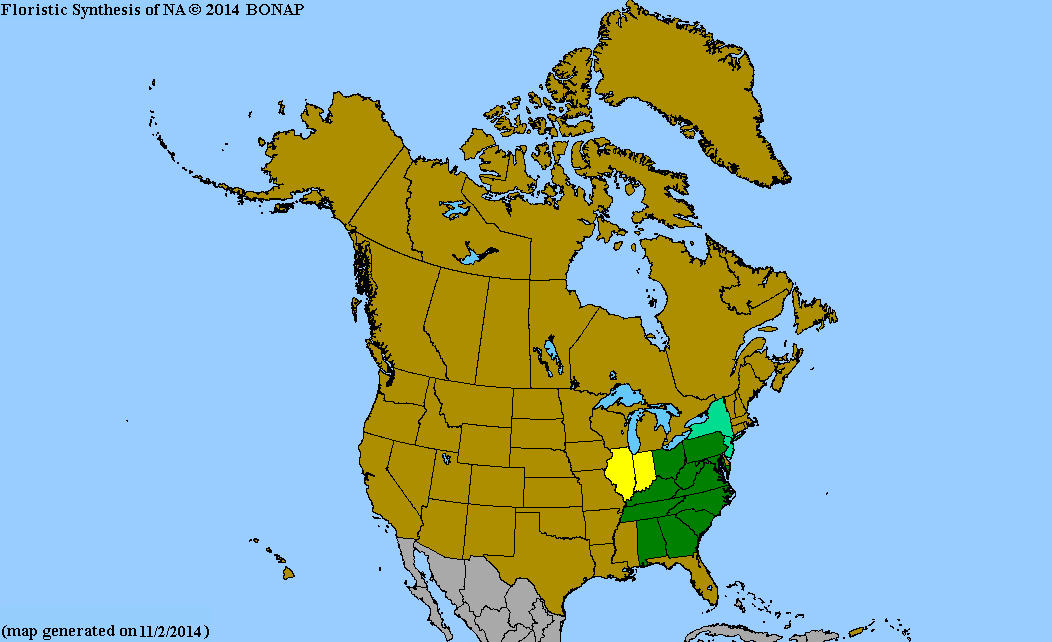
Map courtesy of The Biota of North America Program.
Map color key
Search Our Database: Enter any portion of the Scientific, Common Name, or both.
Do a general Google search of the entire site:
#ad
 Follow USWildflowers on Twitter
#ad
| | Site: Piney River Trail, Rhea County, TN Date: 2016-April-08 | Photographer: Gerald C. Williamson
Nikon D7000
Tamron SP 90MM f/2.8 AF Macro | | The inflorescence of Aesculus flava is a showy terminal cluster up to about 6 inches long made up of yellow flowers each of which have 4 petals and are about 1 to 1.5 inches long. | | 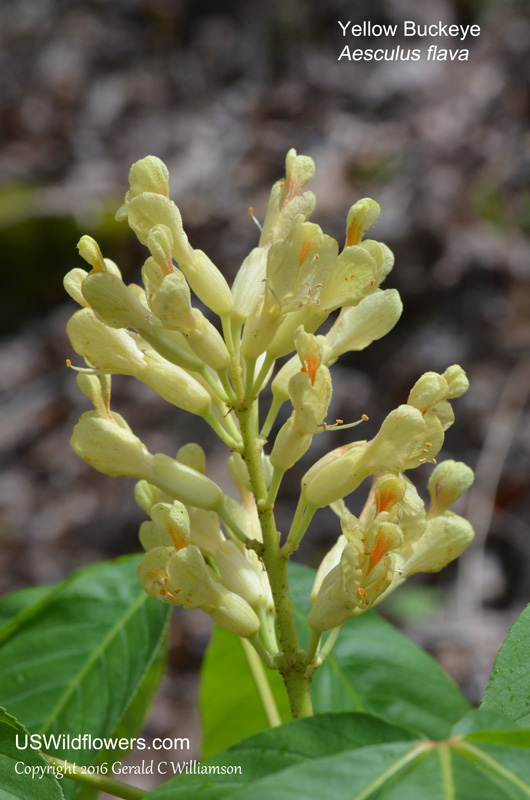
| | Site: Piney River Trail, Rhea County, TN Date: 2016-April-08 | Photographer: Gerald C Williamson
Nikon D7000 | | This photo was key to differentiating Aesculus flava from the other yellow-flowered Buckeyes. Ohio Buckeye - A. glabra - has stamens which are about twice as long as the 4 petals, and they are thus strongly exserted (the Yellow Buckeye stamen showing at the bottom of this photo has fallen thru the petals; it is not exserted due to its length.) The stamens of both Yellow Buckeye - A. flava - and Painted Buckeyes - A. sylvatica - are a bit shorter than the petals, and are normally hidden inside the blossom. The petal margins of both Yellow Buckeye and Painted Buckeye have non-glandular hairs, but the calyx and pedicel of Yellow Buckeye are glandular, as seen in this photo. | | Click on the photo for a larger image
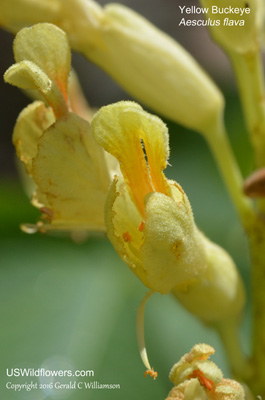
| | Site: Piney River Trail, Rhea County, TN Date: 2016-April-08 | Photographer: Gerald C Williamson
Nikon D7000 | | The leaves of Aesculus flava are palmate with 5 or occasionally 7 leaflets which are 8 inches long or occasionally even longer. The leaflet margins are serrate. | | Click on the photo for a larger image
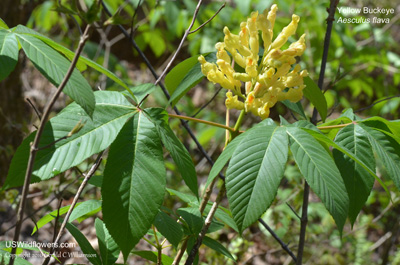
| | Site: Piney River Trail, Rhea County, TN Date: 2016-April-08 | Photographer: Gerald C Williamson
Nikon D7000 | | Any of the Buckeyes could reach this size - Ohio Buckeye and Yellow Buckeye grow to be quite large trees, but Painted Buckeye rarely exceeds 20 feet. Buckeyes hybridized readily, and the plant in the foreground may be a hybrid with Aesculus pavia - Red Buckeye. | | Click on the photo for a larger image
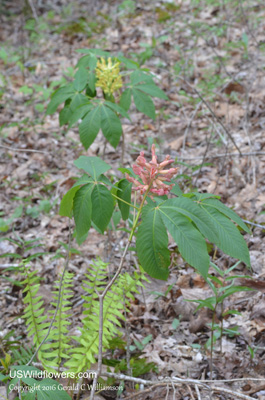
| | Site: Blue Ridge Parkway, Craggy Gardens Picnic Area, Buncombe County, NC Date: 2014-August-29 | Photographer: Gerald C Williamson
Nikon D7000 | | The fruit of Aeculus flava is a capsule that is more or less round, and the shell (pericarp) is more or less smooth - without spines. The nut-like seeds (along with some other parts of the plant) are poisonous unless properly prepared - Native Americans used them to make a nutritious food after soaking and roasting them. | | Click on the photo for a larger image
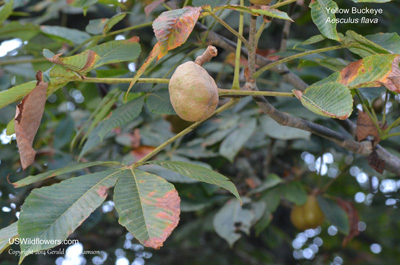
|
References used for identification and information:
|
|
| |
| #ad
|
|







